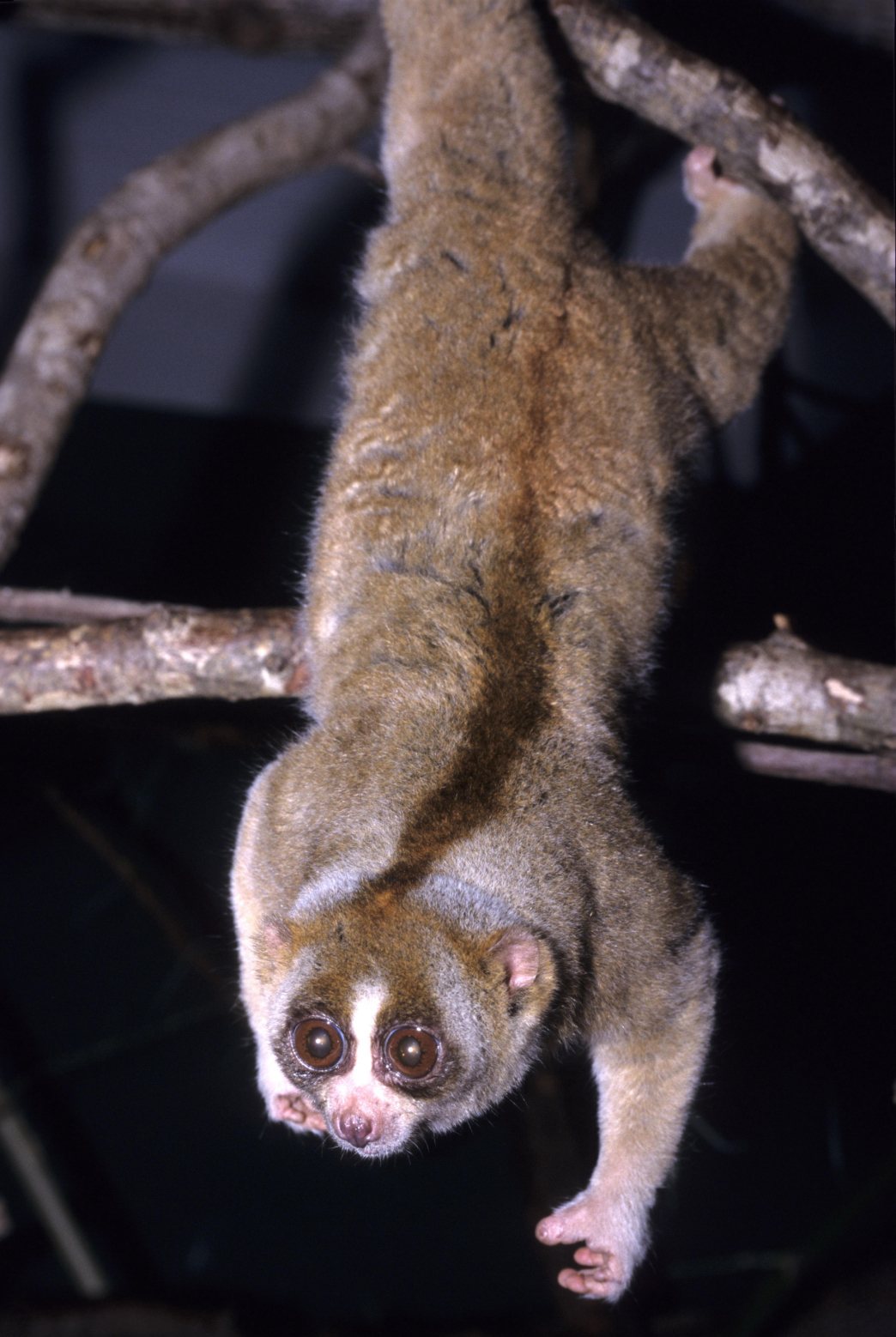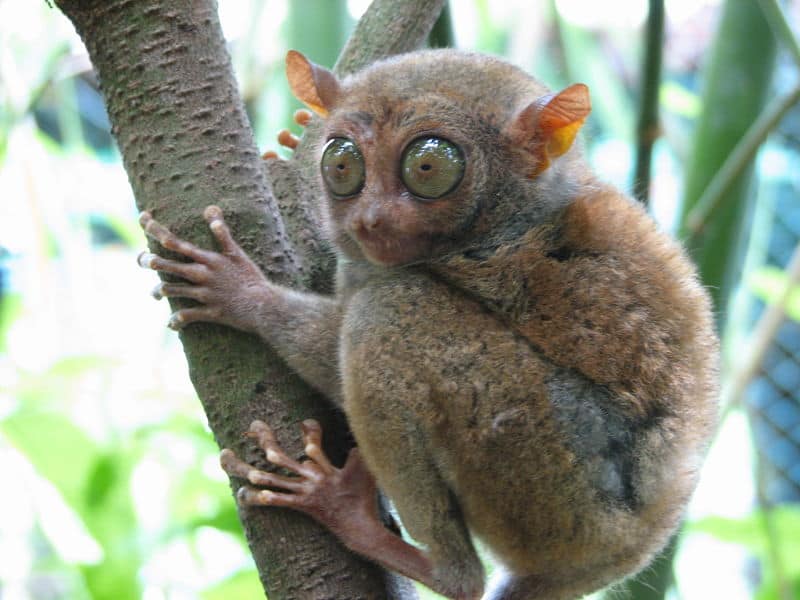The Tarsier is a subspecies of primate living in forests on some islands in Malaysia, Indonesia, and the Southern Philippines. It is further classified into The Philippine Tarsier, The Western Tarsier, The Eastern Tarsier and many more. Fossil records show that Tarsiers once lived in Europe, North America, Africa and mainland Asia. Tarsiers are built for their arboreal and nocturnal lifestyle. They have a little bit fat body, a long tail, long hind legs which enable them leap distances of up to 5 metres from branch to branch, and large eyes which measure 16mm across. The size of their eyes enables them to see in the dark. Their eyes are so big that the Tarsier cannot turn their eyes in their sockets. They have pads on their fingers and toes which help them to climb. They can turn their heads 180 degrees in both directions.
Diet
The Tarsier is the only fully carnivorous primate in the world. Their diet consists of insects, frogs, lizards, and small birds. Some species of Tarsier eat venomous snakes and small bats. Their long fingers and toes help them to catch prey flying in midair.
Pictures
.JPG/450px-Genetta_genetta_felina_(Wroclaw_zoo).JPG)










